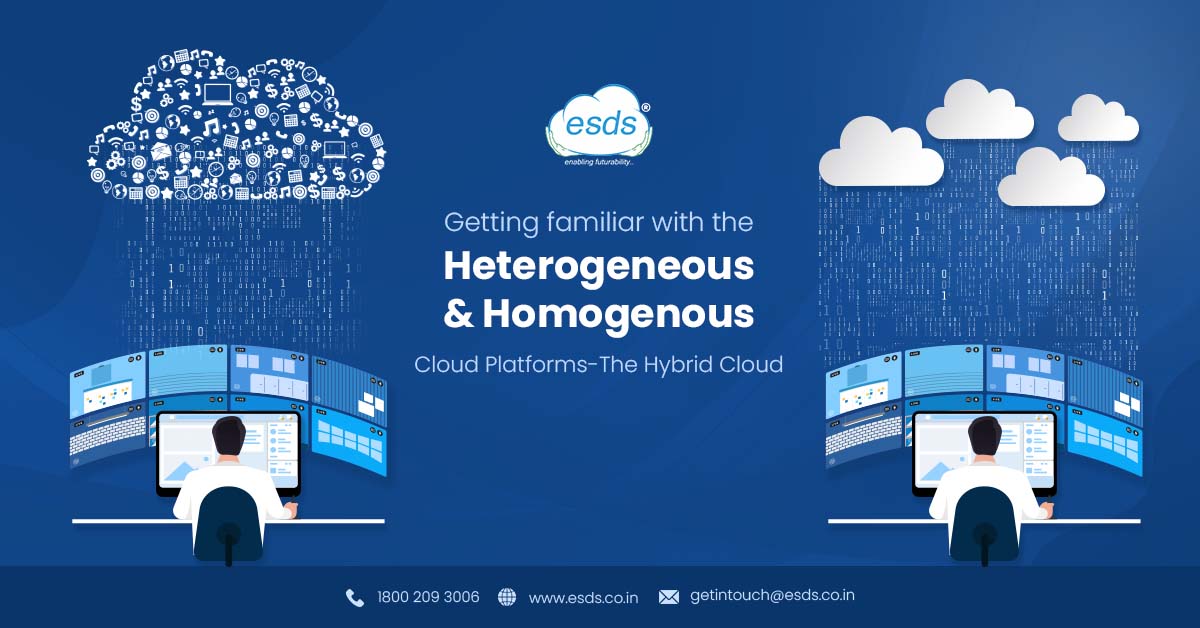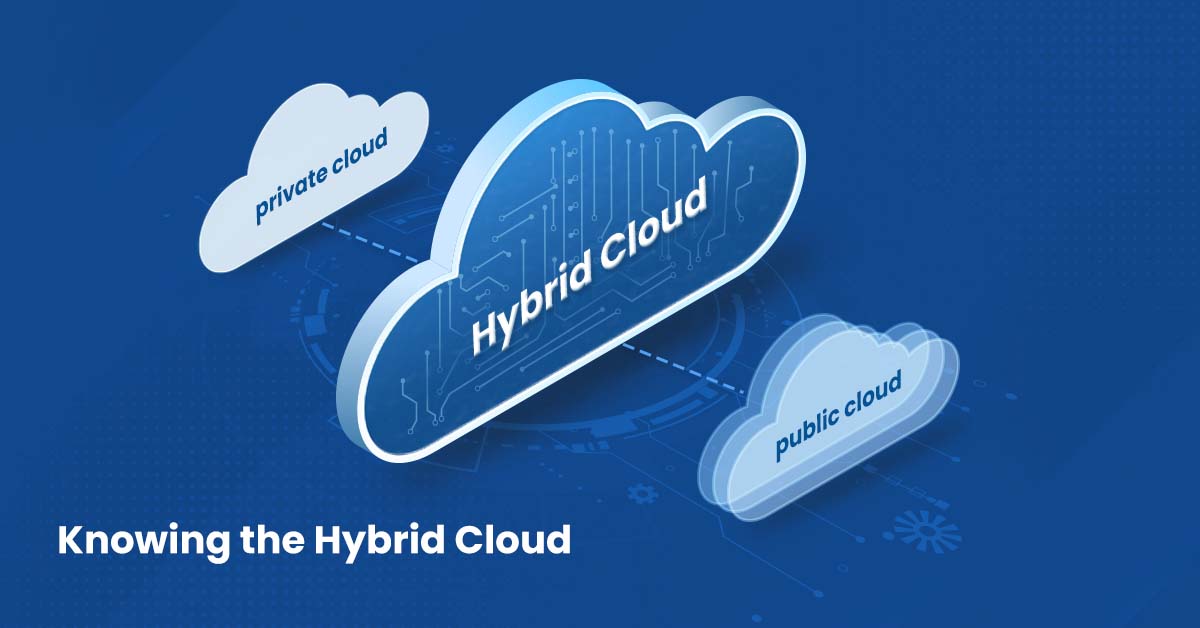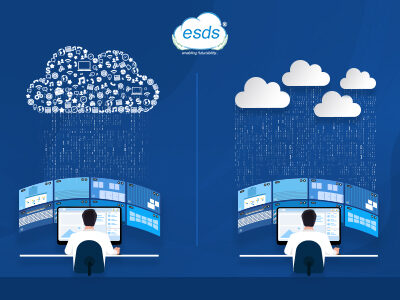Getting Familiar with the Heterogeneous & Homogenous Cloud Platform-The Hybrid Cloud
Many organizations, from SMBs to banking sectors to government organizations, are shifting toward a cloud-first policy. In this case, choosing the cloud deployment model and solution starts with knowing the requirements of your organization. A lot of decision-making is included while learning the cloud strategy that would fit well with your organization’s essentials.

Most organizations opt for a combination of private and public cloud, a hybrid cloud structure.
Getting a hybrid cloud again involves selecting from the heterogeneous and homogenous structures.
Let us dive deep into the Hybrid Cloud deployment model.
The Hybrid Cloud

A hybrid cloud environment combines on-premises infrastructure, private cloud services, and a public cloud, with orchestration across the various platforms. You have a hybrid cloud infrastructure if you use a combination of public clouds, on-premises computing, and private clouds in your data center.
Simply put, a hybrid cloud is one in which applications run in multiple environments simultaneously. Because almost no one today relies solely on the public, private, or on-premise, hybrid cloud computing approaches are becoming increasingly popular.
Over the last few decades, many organizations have invested millions of dollars and hours in on-premises infrastructure. Combining a public and private cloud environment, such as an on-premises data center, and a public cloud-computing environment, such as ESDS Cloud, is the most common hybrid cloud example.
As discussed, a hybrid cloud comes in a homogenous and heterogeneous structure, and another choice must be, selecting a heterogeneous or homogeneous structure.
The Heterogeneous Cloud

A heterogeneous cloud combines public and private cloud components from multiple vendors at different levels like:
Management tool from one vendor and driving a hypervisor from another or a single management tool operating various hypervisors.
For example, you could start with a public cloud provider and then pair it with a private cloud offering.
Thus, the heterogeneous cloud model necessitates businesses partnering with multiple vendors for their public and private clouds, then integrating the various solutions to create a multi-cloud environment.
How does the Heterogeneous Cloud Benefits Organizations?
Using both private and public cloud architecture will give you more freedom to change your architecture in the future (hybrid or multi-cloud capabilities).
Using many different components from different vendors integrated to meet business needs reduces the risk of vendor lock-in.
The Homogenous Cloud

A homogeneous cloud is one in which the same vendor provides all services. In addition, that single vendor provides your public cloud access and any private cloud you may have, whether on-premises or off-premises.
Simply put, a homogeneous cloud is one in which a single vendor provides the entire software stack, from the hypervisor (remote cloud provider) to various intermediate management layers to the end-user portal.
How does Homogenous Cloud Benefits Organizations?
- Turnkey solution with “off-the-shelf” functionality
- Easier to install and configure,
- Easier in terms of operations and management, because the same company provides the public and private portions, they are designed to work together.
- Disaster recovery, security, governance, and monitoring services are built-in and available across both environments.
- Because the on-premises portion is delivered as drop-in hardware or a prebuilt rack, it is less expensive.
- Talent requires skills that are unique to that provider.
Everything that Comes with Benefits has Drawbacks.
Drawbacks of Homogenous
When something is simple to use, it is often more difficult to leave. Users put themselves at the understanding of that vendor’s commercial and technical strategy by giving a single vendor so much power. Leaving that vendor, for whatever reason, becomes risky, costly, and challenging, particularly for security and governance strategies.
Having an IT monoculture has the benefit of allowing administrators to specialize in the tools of the vendor.
The disadvantages are slightly different: on the technical side, features will be available when the vendor decides to develop them. However, the real pain is often on the commercial side because once users are “locked in” to a single-vendor strategy, they have no alternative if that vendor decides to change its pricing structure so that costs rise.
Many service providers once offered this approach, but it was phased out of the market years ago. Traditionally, hybrid cloud options were on-premises software stacks integrated with a public cloud. Physical appliances—hardware—are now being released by cloud providers.
On the other hand, ESDS pushes the aim for a unified cloud renaissance.
Homogeneous vs. Heterogeneous clouds
As we can see, both options offer some degree of flexibility and are adaptable to business requirements. So, how do you select the best hybrid or multi-cloud environment for your company? First, take careful note of:
1. Business requirements
2. Budget and resources available now
3. Your need for more or less control
4. IT administrators and equipment’s maturity
Your business objectives will entirely determine your requirements. For example, if simplicity and speed of operations and management are essential, a homogeneous hybrid cloud architecture may be the best choice. This provides public and private cloud options from a single provider, which means very few integration issues. You will also be able to manage disaster recovery, governance, operations and maintenance, and overall security more quickly and easily. On the other hand, diverse infrastructure may be the best option for businesses with access to more skilled IT staff, planning changes in their business, and requiring more control.
- Decoding Generative AI: A Comprehensive Guide to Gartner’s Impact Radar - January 2, 2024
- 5 Best Practices for Cloud Security in 2024 - December 29, 2023
- 10 Best Machine Learning Ops Strategies for Cloud Environments in 2024 - December 29, 2023
